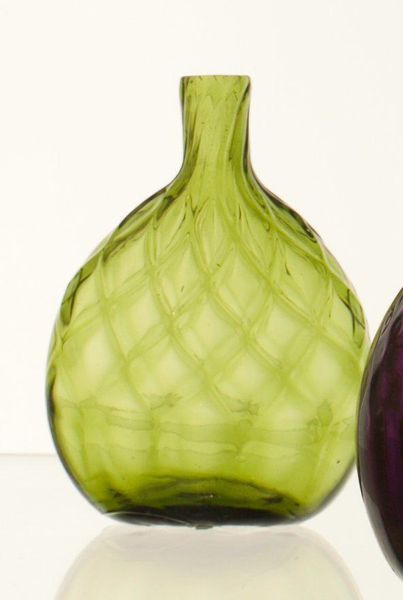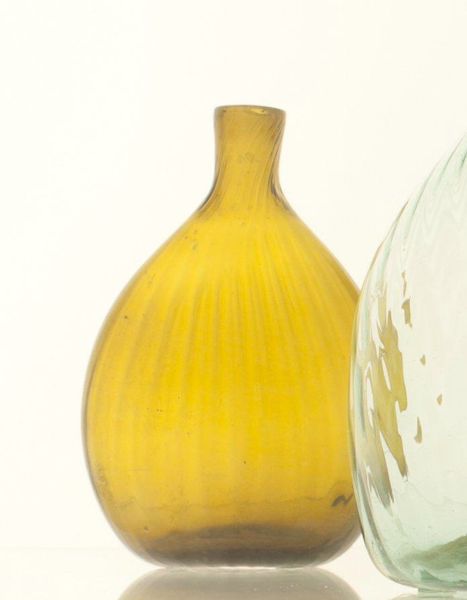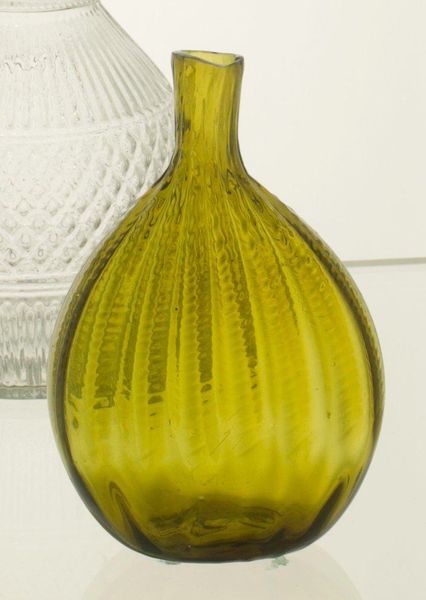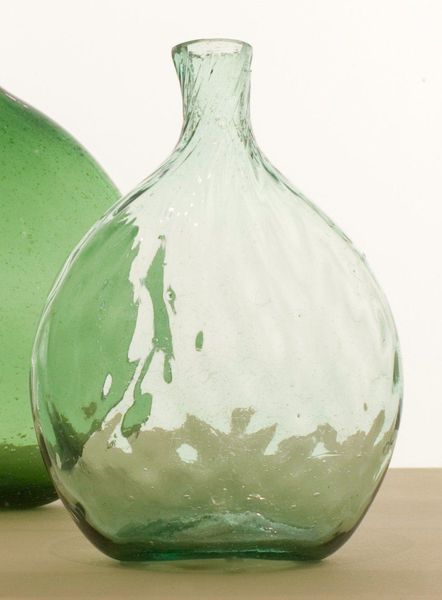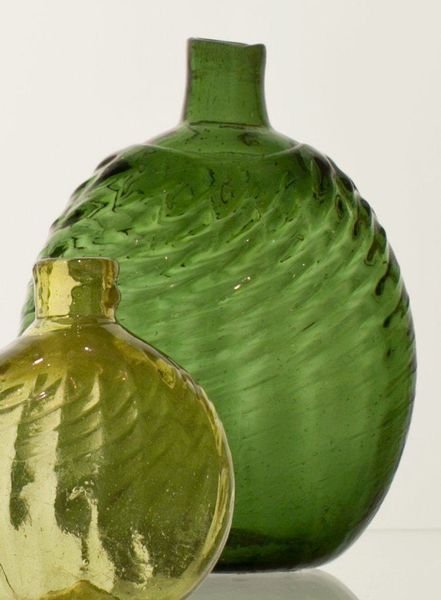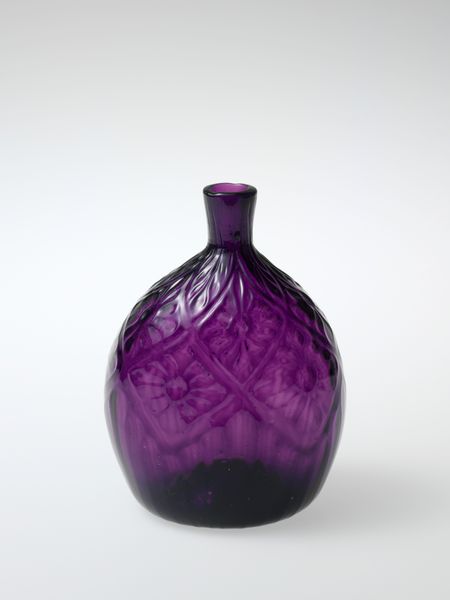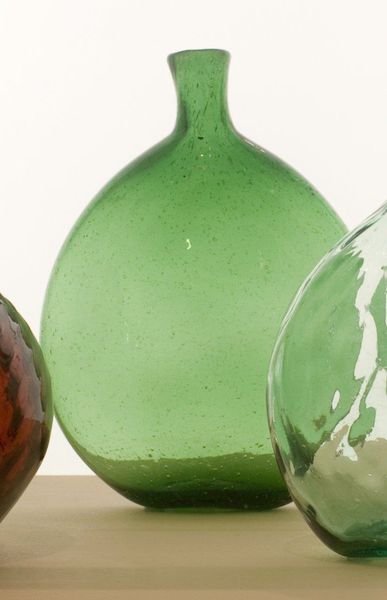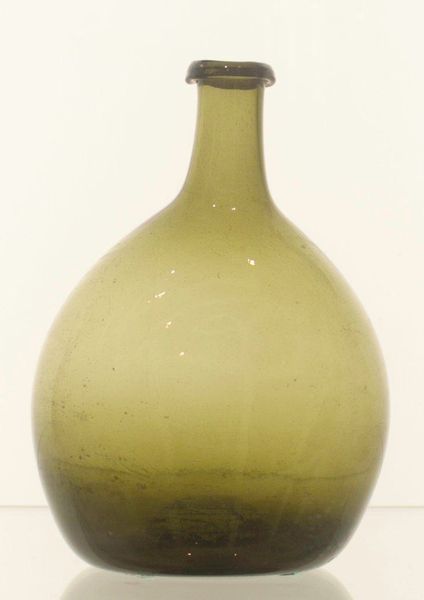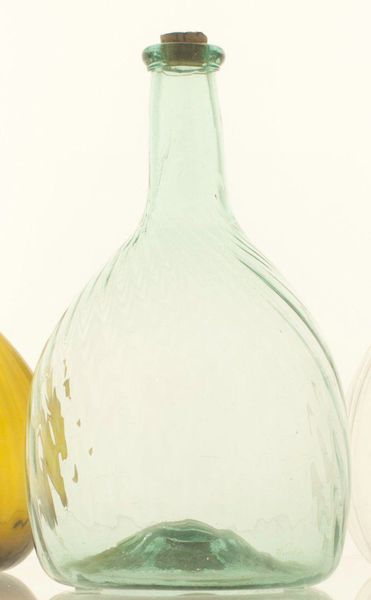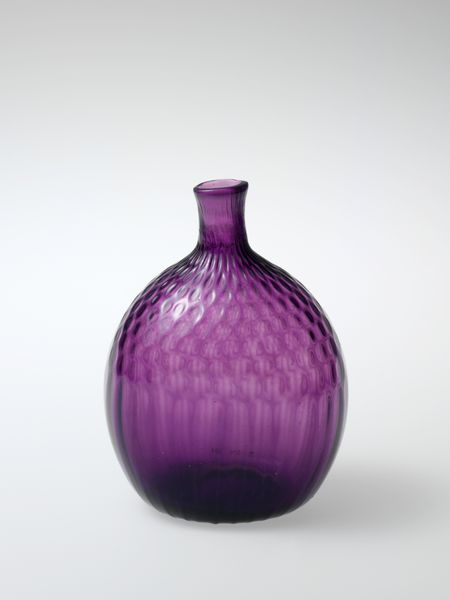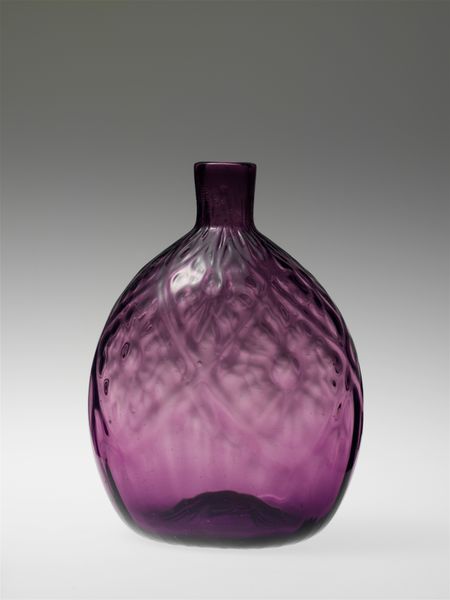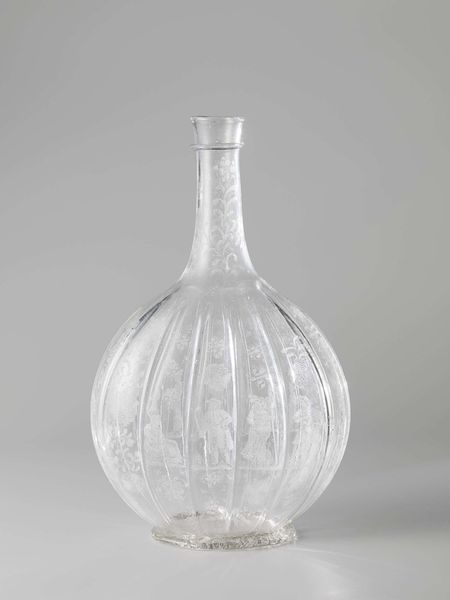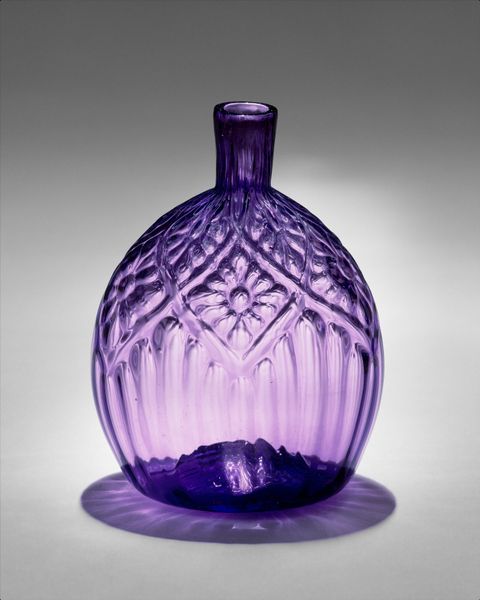
photography, glass
#
still-life-photography
#
photography
#
glass
#
macro photography
Dimensions: 6 1/2 x 5in. (16.5 x 12.7cm)
Copyright: Public Domain
Curator: It has this gentle kind of weightlessness, doesn't it? That lilac tint against the way light flares through the glass... feels like holding captured dreams. Editor: We’re looking at a photograph of a glass flask, likely from the 19th century. It’s part of the Minneapolis Institute of Art's collection, attributed to an anonymous artist. Curator: Anonymous. It always makes you wonder, doesn't it? Who held it, what were their secrets? Because you know this thing held something... potions, messages... or maybe just water for wildflowers? Editor: The very idea of anonymity itself is potent. Were marginalized craftspeople deliberately erased from historical records, denied their due recognition in what were, arguably, gendered or racially-charged industrial hierarchies? We often celebrate individual artistic genius, yet the hands—mostly those of the working class—that physically shaped so much of our material culture remain shadowy. Curator: Yes! This tension is totally captured here! It's ghostly…like we’re looking at something from inside a dream, almost painfully personal, yet veiled somehow, too, isn't it? Macro photography tends to do that, it transforms even a simple bottle into something bigger. Editor: This is further accentuated by the image's composition; it is a study in implied absence. The smooth curves suggest the shape of something held, even womb-like, which highlights a profound irony: this thing made to hold something, now sits empty...a container that can no longer contain. What statements might be implied about notions of loss, of transience, the impossibility of preserving meaning, even? Curator: The transparency of the glass also has to play into that—you see everything and nothing at the same time! It invites us to question exactly where we find ourselves and whether our gaze goes beyond surface appeal! Like the image isn't really about the object but us… Editor: The beauty, or supposed simplicity of an image like this conceals a world of inquiry. Looking through art critically involves excavating buried narratives, revealing complexities where others may simply see aesthetic beauty. This way, we empower not only ourselves but also reclaim forgotten histories of collective artistry. Curator: I agree entirely! It's why art persists, I suppose, this persistent haunting... Editor: Precisely; now we become custodians rather than simply observers, and that small change is perhaps the greatest significance such art brings.
Comments
No comments
Be the first to comment and join the conversation on the ultimate creative platform.
